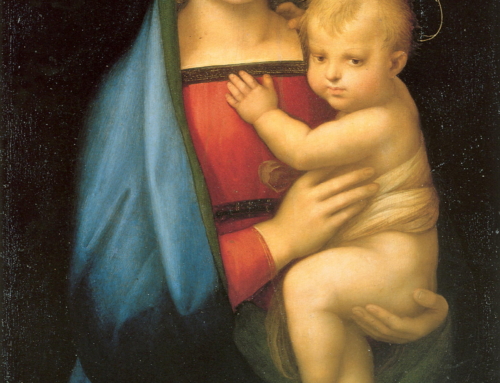We’ve got a deep secret in the Catholic Church, but the secret is seeping out.
We say we believe in One, Holy, Catholic and Apostolic Church, but that attribute of Unity no longer exists, and to be honest, it has not existed for a long time.
The real divide in Christianity today is not between Protestants and Catholics but between what we might call “Historic Christians” and “Contemporary Christians”.
The Historic Christians and the Contemporary Christians are not defined by the denomination they belong to. You will find both groups in most of the denominations and also in the Catholic Church.
In Catholicism the members of the two groups have been hard to tell apart because we have maintained some unity in our liturgy and loyalty in our church government.
Members of both groups have stayed within the big tent of the Catholic Church and agreed to differ on what they considered to be inessentials. However, we all tried very hard to continue to believe that we agreed on the essentials. However, at the foundational level there were deep disagreements that were kept hidden–that nobody wanted to talk about because it was to difficult to name them. It was too difficult to put a finger on what was wrong.
We sensed it in different emphases among different pastors. We sensed it in a different approach to liturgy or a different attitude to social issues. We knew it when different pastors treated divorced and remarried people completely differently and when certain pastors and bishops seemed to treat matters of morality with a totally different perspective than other pastors and bishops. We knew it when some pastors and bishops focussed only on social issues of this world and never spoke about the need for the soul’s salvation or the threat of hell and the hope of heaven.
We sensed that there was a deeper divide.
But we papered over the cracks for the sake of unity. We didn’t talk about it. Instead we tolerated it. We said there were always wheat and weeds growing together and it would all be sorted out one day. We avoided inquisitions and doctrinal tests for fear of division and strife. Besides, how do you conduct those kinds of questions in a slippery relativistic age?
It was also almost impossible to talk about the differences because both sides used the same liturgical language, read the same Scriptures, recited the same creed and therefore, outwardly seemed to believe the same thing. The problem is, the contemporary Christians and the historic Christians interpreted these things in completely different ways.
On Easter day both the historic Christian and the contemporary Christian said, “Alleluia! Christ is Risen!” The historic Christian believed that Jesus of Nazareth, the incarnate Son of God rose physically from the dead. The contemporary Christian believed that “In some way the beautiful teachings of Jesus continued to be believed and trusted by his followers even after his tragic death.” But both said they believed in the resurrection.
This great divide can be summed up simply: The historic Christians believe that Christianity is a religion revealed by God in the person of Jesus Christ, witnessed to by the inspired Sacred Scriptures and formulated by the Body of Christ on earth–the church. They believe this is divinely given and although the forms and expressions might change from age to age, the basics of the faith cannot change.”
The contemporary Christians, on the other hand, believe that the Christian faith is a human construct which originated in a certain religious and cultural milieu, and that it not only can change according to the culture and time in which it finds itself, but that it MUST change to survive.
These two foundational differences are at the heart of the deep divide in Christianity, and until now we have been able to jog along pretending that disagreement about this basic philosophical belief doesn’t matter and that there is room for both.
For the last forty years the historic viewpoint dominated as it had for centuries and although the contemporary predominated in the mainstream Protestant churches, it was a dissident subset in the Catholic Church. With the present trends in the Catholic Church, however, this seems to be reversed.
Consequently we are seeing not only a deepening of the divide, but an intransigence on both sides. Today Pope Francis admitted that he doesn’t want to dialogue with those with whom he disagrees. He doesn’t see the point. They will never change and he doesn’t want to bother with them.
In a way this is a good thing. He is clearly admitting that there is a deep divide in the church that is impossible to bridge because the divide is not about particular issues or particular tastes in liturgy or in particular political viewpoints or church disciplines. The divide is much, much deeper than that.
Somehow that foundational divide must be addressed.
Otherwise there may well be a schism. Those who are entrenched on the historic side will agree with the Pope that dialogue is impossible and if there is not a formal schism, there will be an informal schism–in which those who cannot agree with the pope and his team will continue on their way, and will not break away and form their own church.
The historic Christians will simply get on with their work knowing that in the long run they will win. They know the historic faith has seen off many other heretical attacks from within and persecution from without.
They know they will prevail because their house is built on the rock and not on the shifting sands.







[…] Faggioli rightly observes the two wings of American Catholicism. I have commented on it here and commented on the theological roots of the […]
[…] by Mary Ellen Konieczny, Charles C. Camosy, and Tricia C. Bruce (Liturgical Press, 2016), “Christianity’s Grand Canyon” (by Fr. Dwight Longenecker (February 15, 2018), “American Catholicism: How to Mend the […]